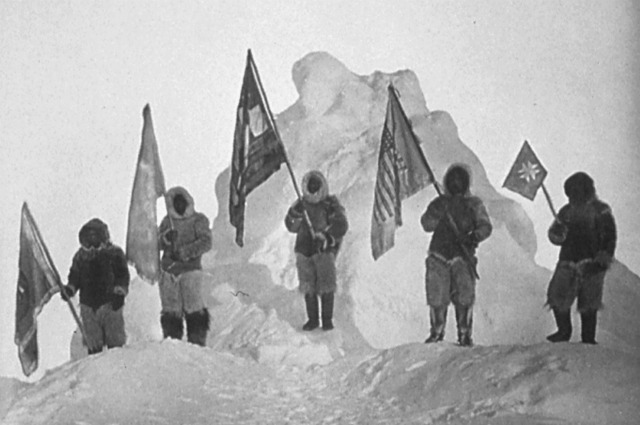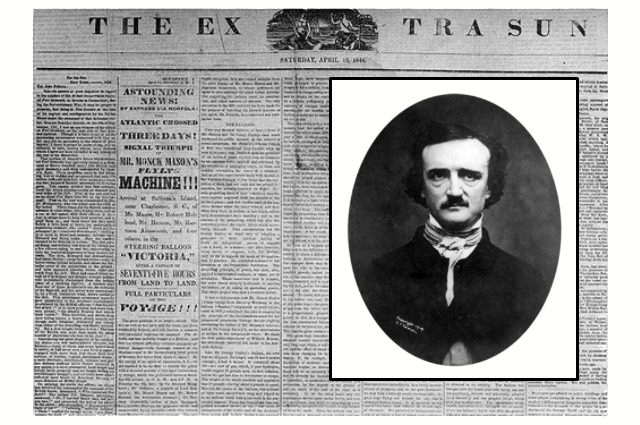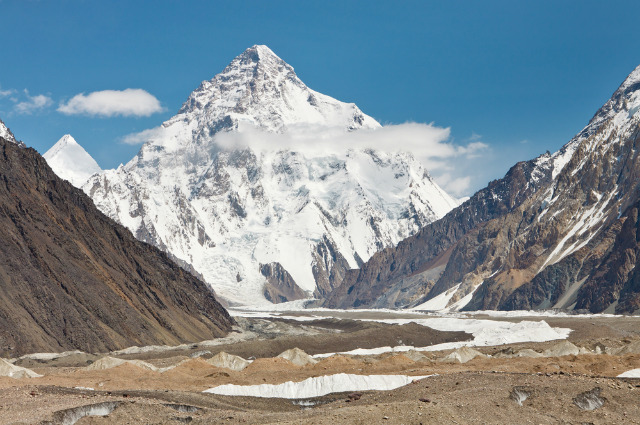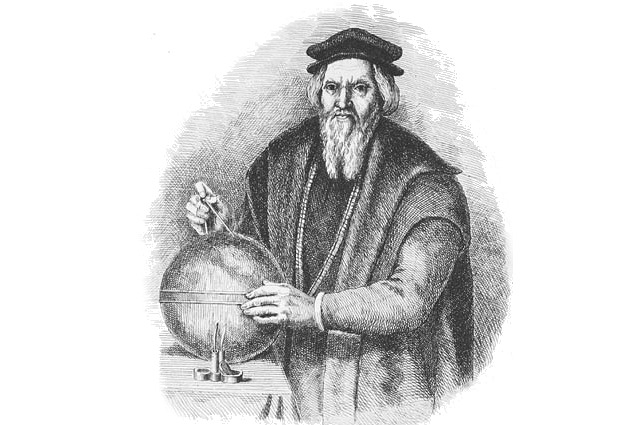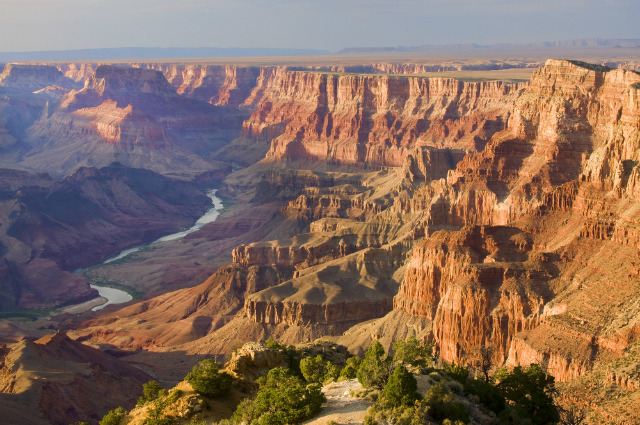12 Adventure Hoaxes
One hundred years ago, Joe Knowles, a 44-year-old illustrator from Boston, conducted one of the great survival experiments of the day as a publicity stunt for the Boston Post. With great fanfare, he journeyed into the Maine woods without clothes or tools, and vowed to live for two months like a Robinson Crusoe of the North, according to an April story in Boston Magazine. Upon his return, grizzled and wearing a bearskin robe, he was celebrated the nation over as the "Nature Man," even penning a bestselling memoir and going on the vaudeville circuit. The truth, however, stunk worse than Knowles did. As was revealed by a rival newspaper, he had, in fact, squirreled himself away in the cabin of his friend, Michael McKeogh, who had dreamed up the stunt to begin with. His bearskin clothes had been purchased from a hunter and he lived on canned food and beer that McKeogh brought back to the cabin.
Donald Crowhurst—RTW Yacht Race (1968)
In 1968 nobody had yet completed a non-stop circumnavigation of the globe by sailboat, which is why it's strange, in retrospect, that an English businessman with no real open-ocean experience would be a contender in a race to be the first. Hoping for a publicity boost for his failing business (and the cash prize), Donald Crowhurst entered the Golden Globe yacht race with an untested trimaran called Teignmouth Electron that he had built for the event, setting out from England on October 31, 1968. Within weeks, his leaky boat was becoming increasingly unseaworthy as he approached the treacherous Southern Ocean, so he veered off course and holed up in the South Atlantic. Hoping to rejoin the race in last place when it came back around, Crowhurst radioed false logs, but in doing so inadvertently made himself a competitor for second place and even set a single-day "world record." When it became obvious that his hoax would be revealed, Crowhurst went off radio June 29, 1969. His boat was discovered July 10, sans Crowhurst—apparently a suicide. The decaying Teignmouth Electron still sits on a beach in the Cayman Islands.
Robert Peary—The North Pole (1909)
The man still largely credited with being the first to reach the North Pole likely never did—although he was probably close on two counts. The U.S. Navy Engineer's supposed breakneck pace and lack of navigational rigor have led modern historians to conclude that, at best, he probably missed the mark by a few miles. (At worst, he knowingly fudged it, being the only person on his team with navigation skills.) But's that not all there is to this tale. His companion, an African American named Matthew Henson, was the first person to reach what they believed to be the pole. "I think I'm the first man to sit on top of the world," Henson reportedly told Peary, according to National Geographic. By Henson's account, Peary was furious to have been beaten to the pole by a black man, and refused to acknowledge who "really" got there first. Peary got the credit and was awarded the honorary rank of Rear Admiral.
Sławomir Rawicz—“The Long Walk” (WWII)
To escape from a Siberian Gulag in the dead of winter, hike 4,000 miles through the Gobi Desert and Himalayas, and into the arms of the British Army in India is an incredible feat of endurance. Too incredible, it turns out. After settling down in England, Polish officer Sławomir Rawicz told his unbelievable tale of survival to British journalist Ronald Downing. Downing ghost wrote Rawicz's bestselling 1956 memoir The Long Walk, which went on to become a classic in the true adventure genre, and was even made into a film, The Way Back (pictured), in 2010. But by then the story was already showing cracks. Records indicate that Rawicz, who died in 2004, was in fact imprisoned where he said he was, but that he was released in 1942 and immediately sent to a refugee camp in Iran. Another Polish prisoner, Witold Glinski, came forward in 2009 to claim that he was the one whose story was told by Rawicz's book, although Glinski's account itself remains unverified. Glinski died earlier this year.
Monck Mason—Atlantic Crossing by Balloon (1844)
Back when "balloonist" was a job title, British balloonist Thomas Monck Mason travelled some 500 miles from London to Weilburg, Germany via hot air balloon, and recorded details of the journey in his 1836 book Account of the Late æronautical Expedition from London to Weilburg. Enter Edgar Allan Poe. Seeing the potential to make mischief, Poe (inset) wrote a bogus story for the New York Sun in 1844 detailing one Monck Mason's three-day balloon trip from London to Charleston, South Carolina. The story was a blockbuster. People lined up to read the news of the then unheard-of trans-Atlantic flight and that day's paper sold out. But only two days later the Sun issued a retraction, possibly written by Poe himself: "We are inclined to believe that the intelligence is erroneous."
Christian Stangl—Skyrunning K2 (2010)
If mountaineering is a sport for the foolhardy, then Austrian climber Christian Stangl is insane. Known for practicing a version of the sport called "skyrunning," which involves summiting high mountains as quickly as possible without supplemental oxygen, Stangl set a speed record by climbing the Seven Summits—the highest mountains on each of the seven continents—in a combined 58 hours and 45 minutes. Or so he claims. If he'd stopped there, perhaps nobody would be asking questions, but it was his attempt to "skyrun" the world's second-highest peak, K2, that raised eyebrows. During a harsh 2010 climbing season in which two climbers died on K2 and none reached the top, Stangl supposedly round-tripped from basecamp to summit and back in 70 hours—by himself with no additional oxygen. All he had for proof was a single photo from what he claimed was the summit. However, under pressure from skeptics who noticed discrepancies in his story (and photo), Stangl admitted that he had "hallucinated" the entire thing because of high-altitude hypoxia. Needless to say, no one in the alpinist community quite believes his Seven Summits record any more.
Oh-Eun Sun—8,000-meter Climber (2009)
There are 14 peaks in the world over 8,000 meters, and only 30 people are confirmed to have summited all of them. Until recently, none of those climbers was a woman; but that changed in 2010 when South Korean Oh-Eun Sun apparently beat her rival, the Spanish mountaineer Edurne Pasabán, to be the first, summiting Annapurna in April of that year. She was honored by South Korean president Lee Myung-bak (pictured) soon thereafter. The problem: Oh may have actually come up short on her 2009 ascent of the world's third highest peak, Kanchenjunga, due to bad weather. The only photographs of Oh at the peak were likely taken some 50 meters to 200 meters down, and two of her three accompanying Sherpas claimed that they never made it to the top.
Dr. Frederick Cook—Mt. Denali and North Pole (early 1900s)
Robert Peary isn't the only one who stretched the truth about reaching the North Pole. His rival, Dr. Frederick Cook, claimed to have done it in 1908—a year earlier—and even got credit for it at the time. With only his two Inuit companions as witnesses, Cook claimed the evidence was in records that he was forced to leave behind in Greenland, never to be recovered. None other than Peary led the campaign to discredit Cook, whose case was damaged beyond repair by incorrect navigational data he released in 1911. This was on top of another hoax attached to Cook's name: the first ascent of Denali. He led a 1906 expedition to summit the highest mountain in North America, now called Mt. McKinley, and released a photo (left) to prove it. The only problem is that neither his photo or any of his records depict what an actual ascent of McKinley looks like. His "peak" was actually found to be 19 miles away. The real one is pictured at right.
Sebastian Cabot—The Northwest Passage (1508-09)
Son of the explorer John Cabot, who claimed all of North America for England, Sebastian Cabot returned to the British Isles from the New World in 1509 with some incredible news: he had discovered the fabled "Northwest Passage" to China. Based on his description, though, what he had in fact stumbled on was the Hudson Bay, a fact he might have discovered had he not turned back to prevent mutiny by his freezing and tired crew. But according to the book Great Exploration Hoaxes by David Roberts, Cabot may have never even left Bristol, England, from where had supposedly set out. "Sebastian Cabot seems to have been a thoroughgoing confidence artist," writes Roberts. "He managed to build successful careers in both Spain and England as an adviser on northern navigations mainly by fostering the illusion that he was the sole possessor of vast funds of secret geographical lore." Some historians believe Cabot may have invented the tale of his expedition to ingratiate himself to kings.
Friedrich von Egloffstein—First Images of the Grand Canyon (1857)
Twelve years before John Wesley Powell led the first expedition down the Colorado River in 1869, the U.S. Military sent a team led by Lieutenant Joseph Christmas Ives to explore the Grand Canyon. In his group was landscape artist Friedrich von Egloffstein, a German mapmaker who'd made his way west, and had even mapped another expedition to what is now known as the Black Canyon of the Gunnison in modern-day Colorado. When the final report of Ives' journey, Report Upon the Colorado River of the West, was published in 1861, it contained Egloffstein's renderings of vertical canyon walls and conical spires—in other words, nothing like the actual Grand Canyon. (Compare Egloffstein's engraving of where Diamond Creek meets the Colorado to a photograph of the same location at right.) As a more accurate image of the canyon settled into the public mind, his drawings were ridiculed as frauds and he was largely forgotten. However, as an enterprising journalist for Harper's Magazine discovered in 2001, this hoax wasn't a hoax at all: it was likely a clerical error. Writer Jeremy Miller found that the Gunnison was called the "Grand River" at the time of Egloffstein's earlier expedition. Egloffstein's drawings, it turns out, match vistas seen in the Black Canyon almost perfectly and were probably misfiled by congressional staffers. The original drawings of the Grand Canyon have yet to surface.
Cesare Maestri—Cerro Torre Summit (1959)
Rising over 10,000 feet in southern Patagonia, Cerro Torre's nearly vertical spire, capped by an "ice mushroom," is widely considered one of the most difficult climbs in the world. In 1959 it was still one of the great unclimbed mountains, and Italian alpinist Cesare Maestri was part of a three-man team aiming to be the first to its summit. Part way up, one member of the team turned back, and Maestri continued onward with his climbing partner Toni Egger. According to Maestri, the two reached the top, but his word was the only proof: on the way down an avalanche killed Egger and swept away the camera containing photographic evidence, he claimed. Later climbs failed to find any evidence of his ascent, and once Cerro Torre was finally, verifiably, summited by Maestri's alleged route in 2005, the ascent turned out to be different than Maestri described.
Capt. Samuel Adams—Running the Colorado (1869)
A "captain" about whom little is known prior to 1867, Samuel Adams was a huckster with grand ambitions, according to David Roberts, author of Great Exploration Hoaxes. Whether or not he believed it himself, Adams made the claim in a letter to the secretary of war Edwin Stanton that, apart from previously impassable rapids at Boulder Canyon, the Colorado River upstream of Callville, Ariz., near the Grand Canyon, was easily navigable, and that the "imaginary canyons and rapids" people feared, did not exist. If true, this would mean the Colorado could function as a western Mississippi for the growing nation. Earning some lukewarm commendation from Congress for his letter and a response from Stanton, Adams set out to prove his theory by attempting to attach himself to the famous 1869 expedition of John Wesley Powell down the river. According to Roberts' book, Powell saw through the ruse and refused to take Adams on, so Adams assembled his own team to travel down the Colorado River from its headwaters in the then-Colorado Territory. Adams quickly discovered his mistake, losing all of his boats to the furious river within 150 miles of his starting point, but that didn't stop him from trying to steal Powell's thunder and claim first descent of the mighty Colorado. He submitted a phony report of his explorations to Congress and secured the introduction of a House resolution to recognize his accomplishment. It died in committee.

